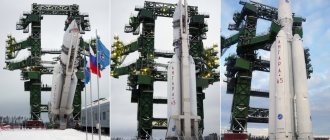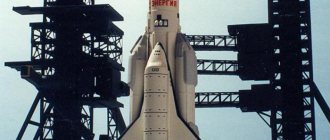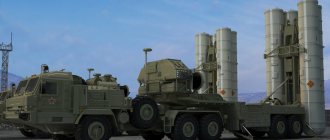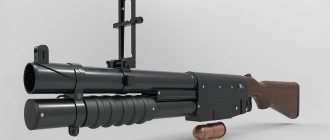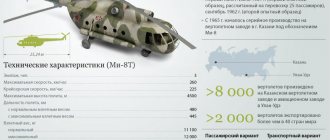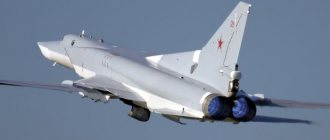Cosmonautics has always been Russia’s “trump card” and a reason for the pride of its citizens. Since the creation of the first satellite and man in space, we have become accustomed to the rapid development of this direction, which is one of the most significant geopolitical arguments.
But the devastation in the 90s significantly slowed down the development of this industry. Fortunately, in recent years the situation has begun to change. A striking example of this is the resumed flights of the Proton-M heavy rocket, which can launch record volumes of cargo into orbit.
The peak of development of Soviet cosmonautics occurred in 1960. It was then that it became clear that the state needed a super-powerful launch vehicle that would be able to launch even more cargo into orbit. Of course, the “first fiddle” in lobbying for these plans was played not even by the official cosmonautics, but by the military, who felt the need for a powerful “truck” to place heavy military cargo in outer space.
During those years, both sides of the Cold War showed serious interest in launching super-powerful hydrogen bombs into geostationary orbit. Fortunately, neither the United States nor the USSR went so far as to implement such suicidal steps, although the Proton-M rocket already existed at that time.
Let's consider the immediate creation process. OKB-52, headed by V.N., was entrusted with the development. Chelomey. In order for this bureau to cope with the task and not miss deadlines, it was necessary to include many aviation design bureaus across the country in the process.
The first prototype was created already in 1962. The missile was named "UR-200". Between 1962 and 1964, 9 test launches of modern technology were carried out simultaneously.
New prototype
Fortunately, they were all successful, but even before the test flights began, in 1961, Chelomey himself insisted on creating a new prototype. According to the flights carried out, it should become 5 times heavier than the original version.
Initially, the creators wanted to go in the direction of “least resistance” by combining 2 UR-200 missiles and adding 1 more booster stage to the resulting design. But preliminary calculations have already demonstrated that the reliability of this design leaves much to be desired.
As a result, they decided to develop a new UR-500 rocket, however, in order to simplify the calculations, scientists settled on a compromise option: they used a sequential arrangement of stages as the upper part, they used that for the UR-200. Of course, the original project was significantly reworked.
Engines
The specialists had to tinker with the development of engines. This is because, as a result of lengthy debates, they chose a polyblock version of the 1st stage layout. This scheme made it possible to fit into the technological spans of tunnels and bridges when transporting rocket stages, but it imposed certain restrictions on the fuel used.
A traditional oxygen-kerosene couple is practically impossible, since it would require a significant increase in size, and therefore poisonous unsymmetrical dimethylhydrazine with nitrogen tetroxide as an oxidizing agent was chosen as the fuel.
But Korolev demanded that kerosene be used, which resulted in a conflict with him. Until 1965, large-scale tests of the new power plant were carried out under conditions that were as close as possible to reality.
TOP 10 most terrible missiles on the planet
On August 29, at an air force base in California, USA, the latest secret American technology was launched - the Delta IV spy satellite. The object is the most powerful rocket in the entire history of mankind. Its height is 71 meters, engine performance is 17 million horsepower, and one launch of the monster cost the United States one million dollars.
America has always had a special attitude towards world organizations and their large-scale events. Therefore, the owners of the most powerful rocket in the world decided to launch it on August 29 - the International Day of Action against Nuclear Tests. The funny thing is that the States have never admitted what the purpose of the development, construction and launch of Delta IV was.
The men's online magazine MPORT remembers that not only the States have super powerful weapons. There are many more countries in the world that can also boast intercontinental ballistic missiles. Find out what you, a peaceful inhabitant of planet Earth, should be most afraid of?
The most mobile is Topol-M
Manufacturer: Russia, first launched in 1994. Launch weight - 46 and a half tons. It is considered the basis of Russian nuclear weapons.
The most protected - Yars RS-24
Manufacturer – Russia, first launch – in 2007. Flight range – 11 thousand kilometers. Unlike Topol-M, it has multiple warheads. In addition to warheads, Yars also carries a set of missile defense penetration capabilities, which makes it much more difficult for the enemy to detect and intercept it. This innovation makes the RS-24 the most successful combat missile in the context of the deployment of the global American missile defense system. And you can even place it on a railway carriage.
The heaviest - R-36M Satan
First launch - 1970, weight - 211 tons, flight range - 11,200 - 16,000 kilometers. Missile systems located in silos cannot be too light by definition. Satan simply broke the record of all heavyweights.
The most accurate - Trident II D5
Manufacturer: USA, first launched in 1987. Weight – 58 tons, flight range – 11,300 kilometers. Trident is submarine-based and capable of hitting hardened ICBM silos and hardened command posts with extreme precision.
The fastest – Minuteman LGM-30G
Manufacturer - USA, first launch - 1966. The mass of the rocket is 35 and a half tons. Range – 13,000 kilometers. This missile is believed to be one of the fastest ICBMs in the world and can accelerate to more than 24 thousand kilometers per hour during the terminal phase of flight.
The most sophisticated - MX (LGM-118A) Peacekeeper
Manufacturer: USA, first launched in 1983. Weight – 88.44 tons, flight range – 9600 kilometers. The heavy intercontinental ballistic missile Peacemaker is simply the embodiment of the latest technology. For example, the use of composite materials. It also has a higher hit accuracy, and – which is especially characteristic – increased “survivability” of the missile under nuclear conditions.
The very first - R-7
Manufacturer: USSR, first launch: 1957. Weight – 88.44 tons, flight range – up to 8000 kilometers. The legendary Soviet "seven", which became the world's first ICBM. True, it took several hours to bring it into combat readiness, which did not suit the military very well. And the accuracy of the hit was not great. But they overtook the entire planet.
The very first submarine – Polaris A-1
Manufacturer - USA, first launch - 1960. The mass of the rocket is 12.7 tons, the flight range is 2200 kilometers. Despite attempts to launch a missile from submarines by engineers of the Third Reich, only the Americans succeeded: their first Polaris was launched from the nuclear submarine George Washington from a depth of 20 meters. And exactly 40 days later the same success came to the Soviet R-21 rocket.
The most economical - R-30 Bulava
The manufacturer is Russia, the first launch took place in 2005. The mass of the rocket is 36.8 tons, the flight range is 8000-12000 kilometers. According to experts, replacing traditional liquid-propellant missiles with Bulava greatly reduces the nuclear deterrent potential due to an almost threefold reduction in the throwable weight. In addition, the missile is launched at an angle, which allows it to fire directly on the move.
Such a boat appeared thanks to Russia’s banal desire to save money: the country’s desire to reduce development costs by unifying the Bulava with land missiles made its production cheaper than usual.
By
Subsequent history
In the domestic cosmonautics of those years, politics ruled. By 1965, when the project was almost completely ready, the enterprise was subjected to numerous inspections on the personal order of L.I. Brezhnev. He was distrustful of his predecessor's legacy.
Therefore, the creation of the UR-200 was stopped. Fortunately, we managed to defend the 500th model. In mid-1965, the Proton satellite was successfully launched into orbit. It was possible to receive a signal from it only a few hours after entering orbit, so for a long time the launch was considered a failure.
In the first press publications that appeared, the rocket was mistakenly named after the satellite. It soon caught on, so it was only in 1965 that Proton-M appeared in astronautics. Or rather, instead of the index “M” the prefix “K” appeared.
It has been called modernized only since 2001, when it was used to first throw cargo into orbit.
Main characteristics
The performance of this amazing Soviet-Russian rocket technology cannot fail to impress. The layout is three-stage. The weight of the Proton A E M itself is 702 tons. The rocket allows 6 tons of payload to be launched into geotransfer orbit at the same time.
The first stage has a diameter of more than 6 meters, the third - more than 4. Taking into account the fact that toxic components are used as fuel, strict compliance with all standards for the preparation of the rocket itself, as well as the launch site for it, is required.
Moreover, the launch cost is less than $100 million. For example, for the American-made Delta IV Heavy rocket, which is one of the main competitors of the Russian Proton-M vehicle, this figure is $265 million, which is 3 times more.
Top fastest rockets in the world
What is the speed of Mach 1 - how many kilometers per second (hour) is it, what is the Mach number and is a speed of Mach 27 possible?
September 12, 2019
- Features of the speed of sound
- Mach 1 is how many kilometers per second
- Mach 27 - is it a dream or reality?
Hello, dear readers of the KtoNaNovenkogo.ru blog. The concept of speed has been known to us since school. If we talk about its physical essence, then this is the distance traveled by a moving body (material point) in a certain period of time.
The distance is represented by both system and non-system units (meters, miles, inches, angles, etc.), while time is determined in seconds or hours. Thus, speed can be expressed in a variety of quantities such as meter per second (m/sec), kilometer per hour (km/h), radian per second (1/sec), etc.
Although the above speed symbols are easily converted into one another, there are a number of areas where it is convenient (or historically accepted) to measure speed in specific units .
For example, sailors prefer "knot" (nautical miles per hour). In astronomy they use radial (radial) velocity, in astronautics - cosmic velocities (there are three of them).
In aviation, where we have to deal with supersonic speeds, the reference point, as a rule, is the speed of propagation of sound waves in a gaseous medium (simpler - the speed of sound in air).
This led to the emergence of such a unit of measurement as the “ Mach number ” (in honor of the Austrian experimental physicist in the field of aerodynamics Ernst Mach). Why this is necessary, we will talk below (and along the way, we note that this scientist has nothing to do with the phrase “gave a blunder”).
Features of the speed of sound
A distinctive feature of the speed of sound is that it varies depending on the nature of the environment .
In particular, in cast iron the speed of sound is approximately 5000 m/sec, in fresh water – 1450 m/sec, in air – 331 m/sec (1200 km/h). The definition of “approximately” was not chosen by chance, since other factors also influence the speed of sound vibrations.
For the air environment of interest to us, the factors influencing the speed of sound are:
- temperature (T);
- pressure (P);
- density (p);
- humidity (f).
The listed indicators are closely interrelated (for example, density is a function of temperature, pressure and humidity), as well as with altitude. They also affect the speed of sound.
This relationship is clearly shown in the table below (according to ICAO data).
Height, m0500100050001000020000
| Pressure, kPa | 101,3 | 95,5 | 89,9 | 54,0 | 26,4 | 5,5 |
| Density, kg/m3 | 1,22 | 1,17 | 1,11 | 0,74 | 0,41 | 0,09 |
| Temperature, 0C | 15 | 12 | 8 | -18 | -50 | -56 |
| Speed of sound, m/sec | 340,3 | 338,4 | 336,4 | 320,5 | 299,5 | 295,0 |
The main thing here is that the speed of sound varies significantly depending on altitude.
Mach 1 is how many kilometers per second
The inconstancy of the speed of sound (as opposed to the speed of light) was one of the reasons that in aerodynamics they began to use a parameter called “Mach”.
Mach characterizes the movement of an aircraft in the air flow, in other words, it shows the relationship between the speed of sound in the air surrounding the aircraft and the speed of the aircraft itself. That is, it is a dimensionless unit.
Mach 1 on the cockpit instrument panel means that the plane is moving at the speed of sound at a specific altitude .
If the plane exceeds the speed of sound at this altitude by two times, then Mach 2 (2 Mach) will be displayed on the instrument panel. The general calculation formula looks like this:
By
Sad statistics
This carrier was able to become famous not only due to the amount of cargo it could carry, but also due to its dimensions. The fact is that the Proton-M rocket is known for a large number of unsuccessful launches. Moreover, this tradition began with its predecessor.
Of the four first launches, which took place from 1965 to 1966, one was already unsuccessful due to accidents in the 2nd booster stage. But the opposite was to be expected, since testing such new technology of this kind is associated with a high probability of failure.
In total, there were approximately 47 cases where the Proton-M launch failed. Considering that there were four hundred starts in total, it turns out that only 89 of them were successful.
Notable disasters
The accidents of this launch vehicle probably would not have caused such a wide public outcry (besides, emergency situations constantly happened to the Proton), although the development of the domestic GLONASS system is associated with its launches.
Therefore, the $100 million that the launch itself cost can be considered paltry compared to the damage that the state could suffer if even one such satellite were lost. This was clearly demonstrated back in 2010, when simultaneously 3 satellites of the GLONASS group went to the bottom of the Pacific Ocean, and not into orbit.
At that time, the damage to the state amounted to about 3 billion rubles, not counting the cost of the missile itself. After the accident (it is believed that it occurred as a result of errors during refueling of the stages), many high-ranking “space” officials lost their posts.
In 2011, as a result of problems with the rocket engines, the unique Express AM4 satellite was unable to be placed into the correct boost orbit. The transition to digital television broadcasting in Russia was associated with it. The whole world tried to save the device: telemetry stations were used all over the planet, but unfortunately, it was not possible to prevent the burning of the satellite, which happened in the atmosphere.
At that time, the cost of damage was at least 10 billion rubles.
Almost the same situation occurred in 2012 with two communications satellites. All due to problems that occurred in the fuel system. As a result, the rockets were launched into the wrong orbit. The equipment was considered lost because communication with it could not be established. The cost of damage was approximately the same - 10 billion rubles.
In mid-2013, troubles with GLONASS continued. Three satellites exploded along with the rocket. A thorough investigation was carried out. This time the culprit turned out to be the angular velocity sensors, which during assembly were installed with a rotation of 180° from the normal position. As a result, the launch vehicle went into the wrong orbit.
In May of this year, another Express satellite sank to the bottom, which again buried plans for a rapid transition to digital broadcasting.
Environmental problems
But if the Proton is so useful and necessary, why did it begin to be replaced with the Angara? There are two main reasons for this: the safety of Russian cosmonautics and the low environmental friendliness of the rocket. All Proton launch sites are located at the Baikonur Cosmodrome in Kazakhstan, and its dimethylhydrazine fuel has become the main Kazakh bargaining chip in negotiations with Russia about the cosmodrome. Horrible “details” often appear in the press about how toxic fuel is almost poured onto the heads of residents during the next rocket launch.
This doesn't have much to do with reality. Stages that have worked correctly fall into the steppe almost empty, after which they are removed by a special service. Yes, accidents happen, and then the area is actually contaminated, but each such case is dealt with separately, deactivation is carried out, and compensation is paid to Kazakhstan. Nevertheless, the idea of replacing the Proton with the Angara and gaining independence in launching a heavy launch vehicle has been floating around in Russian cosmonautics for more than a quarter of a century. The transition process turned out to be much more difficult and lengthy than initially thought.
Proton
Installation of the Proton-M launch vehicle. The Proton-M launch vehicle fell on July 2, 2013 in the first minute of launch
Photo: RIA Novosti/Roscosmos Press Service
Among other things, the increased accident rate of Proton in 2010–2015 and the subsequent entry of new private competitors into the market seriously undermined Russia’s position in the commercial launch market. For more than ten years, Proton has practically lost the results it has accumulated over the years. Even the new version of the Proton-M launch vehicle, released in the 2000s, did not help. Too many different factors came together in one place, and under their pressure, Proton lost a significant share of the commercial market.
Substitution on the field
Why Roscosmos abandons Proton in favor of Angara
If we take the entire time as a whole, then the statistics of Proton launches cannot be called completely bad. The launch vehicle has more than 90% successful launches. At the same time, in terms of technical parameters, the Proton is more convenient and efficient than the Angara that is replacing it, at least in its current unmodified version. However, the absence of dependence is more important.
Prospects and conclusions
As a result of all the cases listed above, many bosses were removed from their positions. The state has allocated approximately 2 billion rubles for high-quality preparation for launches of these types of missiles. As a result, the cost of launching the 1st Proton (with all losses) could be compared to the same as that of the American Atlas-5 rocket.
But, be that as it may, the Proton launch vehicle is considered one of the most important pillars of commercial launches. It turns out that even with accidents, the price of launching into geostationary orbit is the lowest in the world, so Roscosmos does not lack potential clients and partners.
New rocket
Experts have been saying for a long time that Proton-M will soon become obsolete. This is because Angara is currently being actively developed. This is a new generation block rocket that will not only be cheaper than its predecessor, but also easier to manufacture. The Hangar will use kerosene-oxygen engines. It can be launched from the Vostochny and Plesetsk cosmodromes without paying astronomical sums for the rental of Baikonur to the Kazakhs.
Despite such bright prospects, the Proton-M launch vehicle will probably be in operation for a long time, since the development of new technology is delayed.
5:06 / 06/18/17 “Proton-M” (UR-500) - a heavy-class launch vehicle
"Proton" (UR-500 - Universal rocket, "Proton-K", "Proton-M")
— a disposable heavy-class launch vehicle (LV), designed to launch automatic spacecraft into Earth orbit and further into outer space. Capable of launching loads up to 3.3 tons into geostationary orbit (GSO).
Launch of the Proton launch vehicle / Photo: Khrunichev.ru
Developed in 1961-1967 in the OKB-23 division (now the M.V. Khrunichev State Research and Production Space Center), which was part of V.N. Chelomey’s OKB-52. The original two-stage version of the Proton carrier (UR-500) became one of the first medium-heavy class carriers, and the three-stage Proton-K became one of the heavy ones. [1]
The Proton launch vehicle was a means of launching all Soviet and Russian orbital stations Salyut-DOS and Almaz, modules of the Mir and ISS stations, planned manned spacecraft TKS [2] and L-1/Zond (Soviet lunar -flight program) [3], as well as heavy satellites for various purposes and interplanetary stations.
Model of a transport supply ship / Photo: ru.wikipedia.org
Computer model of the ship 7K-L1 / Photo: ru.wikipedia.org
Since the mid-2000s, the main modification of the Proton launch vehicle has been the Proton-M launch vehicle, used to launch both federal Russian and commercial foreign spacecraft.
On July 16, 1965, the first launch of the UR-500 rocket took place in a two-stage version with the Proton-1 scientific space station weighing 12 tons, the name of which was subsequently assigned to the launch vehicle. [4]
The task for designing a carrier for heavy space objects - a powerful universal rocket UR-500 (internal code UR-500 - a universal rocket with a launch weight of about 500 tons) was received from the USSR government in 1962. [5] By this time, work on creating a heavy-class launch vehicle had already been carried out since the second half of 1961 in branch No. 1 of OKB-52 (now the Salyut Design Bureau of the Khrunichev State Space Research and Production Center (GKNPTs)) under the leadership of Vladimir Chelomeya.
Vladimir Nikolaevich Chelomey / Photo: lemur59.ru
Curriculum Vitae
Vladimir Nikolaevich Chelomey
(June 17 (30), 1914, Siedlce, Russian Empire - December 8, 1984, Moscow, USSR) - Soviet designer of rocket and space technology and scientist in the field of mechanics and control processes, academician of the USSR Academy of Sciences (1962). Twice Hero of Socialist Labor (1959, 1963). Laureate of the Lenin Prize and three State Prizes of the USSR. In fact, he headed the Council of Chief Designers in 1961–1964.
In accordance with the government decree, the rocket was designed not only as a carrier of spacecraft for various purposes, but also as a powerful combat ballistic missile, but already during the creation of the launch vehicle, the original task was changed - the option of using the rocket as a combat one was removed from development. At the final stage of work, the rocket was created exclusively as a carrier of spacecraft.
Characteristics of the Proton-M launch vehicle / Image: RIA Novosti, Infographics
The launch vehicle layout was based on the principle of ensuring the transportation of rocket parts from the manufacturer to the cosmodrome by rail with a minimum amount of assembly work performed at the technical complex. The possibility of carrying the maximum size determined the choice of the diameter of the central blocks of the rocket (4.1 meters).
Initially, the creation of the heavy universal UR-500 missile was supposed to be carried out on the basis of the universal UR-200, namely, to connect four UR-200 missiles in parallel, supplementing the resulting “package” with a third stage (a modified second stage of the UR-200 missile) [7].
However, the analysis carried out, including taking into account experiments on a dynamically similar layout, showed that such a scheme is not optimal.
The UR-200 missile was a two-stage ICBM with a sequential arrangement of stages of different diameters / Images: nevskii-bastion.ru
Ultimately, a two-stage scheme with a tandem arrangement of stages was accepted for development. The first stage is a new development. The second stage of the UR-500 was a modified version of the first stage of the UR-200 missile.
Launch of the Proton launch vehicle / Photo: Khrunichev.ru
For the first stage, the design bureau of academician Valentin Glushko [8] created the most powerful engine at that time with “terrestrial” thrust - 150 tons, with afterburning of the generator gas in the combustion chamber. High-boiling components of engine fuel are nitrogen tetroxide and unsymmetrical dimethylhydrazine.
Academician Valentin Glushko / Photo: rusplt.ru
Curriculum Vitae
Valentin Petrovich Glushko (Ukrainian Valentin Petrovich Glushko; August 20 (September 2) 1908, Odessa - January 10, 1989, Moscow
)
- Soviet engineer and scientist in the field of rocket and space technology.
One of the pioneers of rocket and space technology, the founder of Soviet liquid-propellant rocket engine construction. Chief designer of space systems (since 1974), general designer of the reusable rocket and space complex "Energia - Buran", academician of the USSR Academy of Sciences (1958; corresponding member since 1953), laureate of the Lenin Prize, twice laureate of the USSR State Prize, twice Hero of Socialist Labor ( 1956, 1961). Member of the CPSU Central Committee (1976-1989). In January 1962, the design and layout scheme of the first stage was chosen. It consists of a central block of large diameter and six side blocks of small diameter, located symmetrically around the central one.
Typical liquid rocket engines: a — RD-253 engine (I stage of the Proton-M launch vehicle); b — RD-0210 engine (II stage of the Proton-M launch vehicle) / Photo: www.sovkos.ru
Each of the side blocks includes a fuel tank and an autonomous sustainer liquid rocket engine (LPRE) RD-253 [9] designed by V. Glushko. The central block is only an oxidizer tank.
At the second stage, as on the prototype (UR-200), they decided to install four OKB-154 engines (now JSC Chemical Automatics Design Bureau) by Semyon Kosberg [10], increasing the degree of expansion of the nozzles. The rocket was controlled during the second stage flight phase by rocking the engines using four steering gears.
Semyon Kosberg / Photo: jewmil.ru
Curriculum Vitae
Kosberg Semyon Arievich
-
prominent Soviet designer, creator of aircraft and rocket engines, Chief Designer of OKB-154 (Chemical Automation Design Bureau).
Born on October 14, 1903 in the city of Slutsk, now Minsk region (Belarus), in the family of a blacksmith-handicraftsman. Jew. In 1917-1919 he studied at the Slutsk Commercial School, in 1919-1925 he worked as a blacksmith and mechanic in his father’s forge. At the same time, in 1922-1924, he studied at evening general education courses, where he received a secondary education.
In 1925-1926 he served in the army. After demobilization, he worked as a mechanic at the S. Khalturin factory in Leningrad. In 1927-1929 he studied at the Leningrad Polytechnic Institute, and then at the Moscow Aviation Institute, from which he graduated in 1930.
In 1931, S.A. Kosberg was sent to work at the Central Institute of Aviation Engine Engineering (CIAM), where he worked his way up from design engineer to head of the research department.
He was involved in the creation of direct fuel injection systems into the cylinder heads of aircraft engines instead of insufficiently efficient carburetor injection systems. With a group of engineers S.A. Kosberg studied foreign experience, developed and tested a direct injection system for the M-34 aircraft engine. Until 1940, several direct injection units of various designs were designed, manufactured and tested.
In 1936-1939, the first articles by S.A. Kosberg about the injection system for gasoline engines appeared in the press. By 1940, the issues of creating automation systems and regulation of direct injection units, as well as their manufacturing technology, had been resolved. The use of these systems in the operation of aircraft engines made it possible to achieve an increase in their power, increased efficiency, improved performance (the ability to start at low temperatures, throttle response, stability of operation at low speeds and at high altitudes), reliable operation during combat evolutions of the aircraft. These advantages over known systems served as the basis for their development and implementation in the aviation industry.
During the initial period of rocket production, great difficulties arose due to the use of a new, little-studied high-strength material ACM in the design. Finished containers made of this non-plastic metal did not withstand static tests. There have even been cases of their spontaneous destruction during long-term storage. In this regard, the alloy was replaced with the highly plastic material AMG-6, although this caused the products to become heavier.
To service the UR-500 at Baikonur, by 1965, a technical complex with two workstations and a launch complex with two launchers were commissioned.
Launch vehicle "Proton-M" at the launch complex / Photo: oruzhie.info
In the spring of 1965, the plant named after M.V. Khrunichev (now the State Research and Production Space Center named after M.V. Khrunichev) manufactured blocks of the UR-500 rocket. On the first test flight, instead of traditional ballast, they decided to launch into low-Earth orbit the Proton laboratory satellite, designed to study high-energy cosmic particles. It was manufactured at OKB-52 (now JSC Military-Industrial Corporation Scientific and Production Association of Mechanical Engineering). After checking all systems, the carrier and satellite were sent by rail to the cosmodrome.
Transportation of the Proton-M launch vehicle to the launch complex / Photo: oruzhie.info
Before the first launch there were some surprises: the rush to prepare the carrier at the starting position almost led to an accident. Due to a leak in one of the connectors, when filling the oxidizer from the filling pipeline, some of the nitrogen tetroxide got onto the electrical harnesses. The check showed that there was no short circuit to the body, Vladimir Chelomey decided to launch.
The launch took place on July 16, 1965, the launch of the Proton satellite into low Earth orbit was successful.
Satellite "Proton-1" / Photo: ria.ru
In addition to the index 8K82 and “Hercules” (according to other sources - “Atlant”), printed in large letters on the surface of the second stage. It did not catch on, and in the open press it was soon changed to “Proton”.
The design and production of a missile of this class was carried out in our country for the first time, and a number of solutions for the UR-500, for example, the layout of the first stage, had and have no analogues either in domestic or foreign practice.
Flight tests of the two-stage version of the rocket, which began in the summer of 1965, ended a year later - on July 6, 1966. During four launches, three heavy satellites of the Proton series were launched into orbit to study the energy spectrum and chemical composition of particles of primary cosmic rays, the intensity and energy spectrum of gamma rays and electrons of galactic origin.
The third launch, on March 24, 1966, was interrupted due to an accident at the second stage operation site - fragments of the carrier fell in the Akmolinsk area.
After the first four launches of the Proton, carried out to speed up testing in a two-stage version, it was decided to create a heavy-class space launch vehicle on its basis with an increase in launch mass to 700 tons. It is used in two variants; three-stage and four-stage, where the role of the fourth stage is played by the accelerating block.
Since 1967, rocket launches began in three- and four-stage versions. The first three-stage rocket UR-500K with upper stage D was launched on March 10, 1967 with the Kosmos-146 spacecraft. This date is considered the birthday of the Proton-K launch vehicle.
Overclocking blog D / Image: aboutspacejornal.net
The three-stage Proton-K was used to launch payloads into low orbits, the four-stage was used to launch spacecraft into high-energy orbits (including geostationary transfer orbits, geostationary orbits and departure trajectories).
With the help of the Proton launch vehicle, the Cosmos, Ekran, Rainbow, Horizon satellites, satellites for exploring the Moon, Mars, Venus, and Halley's comet were launched into space; manned orbital stations "Salyut" and "Mir", as well as the heavy specialized modules "Kvant", "Kvant-2", "Kristall", "Spectrum", "Priroda" included in them, Russian modules of the International Space Station "Zarya" and "Star".
Currently, the modernized Proton-M launch vehicle is actively used to launch payloads within the Federal Space Program and commercial programs. [eleven]
GKNPTs im. Khrunichev on September 13, 2016 announced the creation of “Medium” and “Light” versions of the Proton-M; according to a press release, the design bureau will produce new modifications of the Proton launch vehicle. The Russian-American joint venture International Launch Services (ILS) took part in the development.
The Khrunichev Center announces the expansion of the product line of the Proton launch vehicle with the Breeze-M upper stage through the creation of two additional modifications - light and medium class. The new Protons will be presented in two modifications - medium and light.
The first launch of the medium-heavy Proton, according to the press release, is scheduled for 2022, the light one - for 2022.
Composition of RN-Proton-M” / Image: topwar.ru
The new launch vehicles are based on their predecessor, Proton-M, as well as the previously used upper stage Breeze-M.
Assembly of the Proton-M launch vehicle at the Baikonur cosmodrome / Photo: topwar.ru
Drawing of the Breeze-M accelerator module / Image: topwar.ru
The middle Proton will repeat the configuration of the Proton-M with the possibility of installing the same head fairing with a diameter of four meters as for the older model.
Two versions of fairings for Proton-M, developed jointly with ILS / Image: topwar.ru
reference Information
In 1993, GKNPTs, RSC Energia and the American corporation Lockheed created the joint venture Lockheed-Khrunichev-Energy (LHE). The main goal of the joint venture was the marketing of launch services for the Proton launch vehicle. As part of this enterprise, GKNPTs provided the manufacture of the launch vehicle, adaptation of the payload to it, the development and manufacture of the fairing and the provision of launch services. The LHE joint venture was reorganized into the International Launch Services Inc. joint venture on June 7, 1995.
International Launch Services (ILS) has the exclusive right to market and commercially operate the Russian Proton heavy-duty launch vehicle and the advanced Angara space rocket system. ILS was registered in 1995 in the USA and is headquartered in Reston, Virginia. A controlling stake in ILS belongs to the Russian State Space Research and Production Center named after M.V. Khrunichev (Moscow), developer and manufacturer of the Proton and Angara launch vehicles.
GKNPTs im. Khrunichev did not reinvent the wheel and used already proven configurations and equipment models to create new Protons. The first stage of the medium and light Proton will repeat that of the Proton-M; the head fairing with the Breeze-M upper stage is also a legacy of the “senior” launch vehicle. The key differences between Proton-M and the announced new products are the abandonment of the second stage to reduce launch costs.
Comparison of Proton-M and new launch vehicle models / Image: website of the State Research and Production Space Center named after. Khrunicheva
The new rockets are optimized two-stage versions of the Proton-M, which will launch exclusively commercial payloads.
Assembly of the Proton-M launch vehicle at the Baikonur cosmodrome / Photo: topwar.ru
It is assumed that the emergence of such carriers will ensure cost-effective launching of various types of spacecraft into geostationary orbit (GSO). And this will strengthen Proton’s commercial potential in the geostationary satellite launch market.
The press release provides the following data regarding the carrying capacity of Proton launch vehicles equipped with a head fairing with a diameter of four meters:
- Heavy class launch vehicle "Proton-M", energy characteristics: 6300 kg at ΔV=1500 m/s
- Middle-class launch vehicle "Proton Medium", minimum energy characteristics: 5000 kg at ΔV=1500 m/s
- Light class launch vehicle "Proton Light", minimum energy characteristics: 3600 kg at ΔV=1500 m/s
In 2022, the Khrunichev Center plans to provide the first launch of a two-stage middle-class Proton rocket. It will have the standard configuration of the Proton-M carrier. It is planned to use a head fairing with a diameter of 4 meters. The payload capacity will be 5.0 tons when the payload is inserted into a typical geotransfer orbit.
Proton-M launch vehicle before launch / Photo: topwar.ru
In 2022, it is planned to launch a “light” version of the Proton. This modification will have four engines on the first stage and a head fairing with a diameter of 4 meters. Load capacity - 3.6 tons.
Energy characteristics of the Proton launch vehicle / Image: topwar.ru
Protons have been flying since 1965 and have undergone many modifications and improvements. The announcement of new lightweight models is a direct application from the domestic space industry to fight for commercial launches, which will not only provide the design bureau with finance for further development and constant “live” rocket launches, but will also ensure the survival of the country’s rocket and space industry as such.
The activation in this direction can be understood: successful commercial launches of SpaceX rockets, the announcement of Blue Origin’s own launch vehicles and the development of space programs of other countries. At a certain point, the Russian space industry occupied a dominant position due to the abandonment of the space shuttle program by the United States and the powerful base received from the USSR.
Comparison of the payload capacity of the Proton and Ariane 5 launch vehicles / Image: topwar.ru
In modern realities, the creation of lighter rockets that are accessible to private companies is a necessity, since super-heavy launch vehicles are no longer in the same demand as before.
Back in 2015, GKNPTs im. Khrunichev reduced the cost of launching the Proton-M rocket from an average of 95 million US dollars to approximately 70 million ljkkfhjd. Launches of lightweight versions of Proton will be even cheaper.
For comparison: currently launching a satellite weighing up to 5.5 tons using a Falcon 9 will cost the customer $62 million (only if SpaceX tries to return the first stage and reduce costs). It is quite possible that the very significant difference of $8 million was the reason why the Israelis refused to launch the Amos-6 satellite using the Proton-M in favor of the Falcon 9, which, unfortunately, exploded on September 1 during a pre-launch check.
In addition to a possible reduction in the cost of the launch below 62 million dollars, which have been flying for about fifteen years, and out of 98 known launches, only 10 of them ended unsuccessfully. At the same time, the bulk of failures are associated not with the explosion of the rocket at launch, but with the launch of the payload (satellites) into the wrong orbit due to equipment failures.
The RB 14S43 “Breeze-M” is distinguished by a high degree of continuity in the design of previous developments that have successfully proven themselves in flights. Thus, the central fuel tank, which combines the remote control and the pneumatic-hydraulic system units, came from the Breeze-K LV, which flew as part of the Rokot LV. In design, separation and release systems, the head fairing (GO) is similar to the fairings of the Mir station modules, the Zarya module and the universal head fairings of the UGO, created for commercial launches of Proton-K. In general, the continuity of units and systems of the Republic of Belarus exceeds 90%.
Composition RB 14S43 “Breeze-M” / Image: topwar.ru
The original designs (DTB, dry compartments, new units and systems) were carefully designed and underwent extensive testing. The new control system was developed and manufactured by the Mars Design Bureau, the new telemetric measurement system "Pirit" by NPO IT, and the modified 14D30 main engine by KBKhM.
Docking of the Proton-M launch vehicle and the Briz-M launch vehicle at the Baikonur cosmodrome / Photo: topwar.ru
RB "Briz-M", having a length of 2654 mm and a maximum diameter of 4100 mm, includes:
- central block (diameter without top screen - 2490 mm, length - 2654 mm)
- DTB toroidal shape (external diameter - 4000 mm, internal - 2490 mm, length - 2071 mm)
- lower spacer with a diameter of 4100 mm and a height of 583 mm
The dry mass of the RB is 2600 kg, the maximum mass of refueled fuel (AT + UDMH) is 19800 kg (5200 kg in the central block and 14600 kg in the DTB). The maximum mass of the launch vehicle launched by the RB as part of the 8K82KM Proton-M launch vehicle into a geostationary transfer orbit (GTO, 5500x35786 km, 25°) is 5500 kg, into a geostationary orbit (GSO) - 3000 kg. () The extended GO as part of the space warhead with the Briz-M booster provides a volume of 97 m3 for the placement of the payload. During an active flight (24 hours), up to 10 activations of the main engine can be performed.
Line of Proton launch vehicles / Image: topwar.ru
The new Proton line will thus include:
- Heavy-class launch vehicle “Proton-M+” or “Proton Heavy”, delivering 6.3-7 tons of payload to the GPO (with ΔV=1500 m/s)
- Medium-class launch vehicle “Proton Medium” (this is the current “Proton M” without a second stage), with 5 tons at the GPO at the same ΔV=1500 m/s
- Light-class launch vehicle "Proton Light" (this is the current "Proton M" without a second stage and with four engines instead of six on the first stage), delivering 3.6 tons to the GPO under the same conditions
It is quite possible that this project from 2012 will be revived - the Proton-M 1A(+) heavy launch vehicle.
Drawing of the heavy launch vehicle “Proton-M 1A(+)”/ Image: topwar.ru
It was calculated that the use of two Topol-1 solid propellant rocket boosters in the first stage of the Proton-M launch vehicle will increase the payload by 570 kg for launch into geostationary orbit. Two Topol-1 accelerators on the first stage and two Topol-2 accelerators on the second increase the payload of the Proton-M launch vehicle by 900 kg.
Another option - three Topol-1 boosters on the first stage and three Topol-2 boosters - will be able to deliver a payload of 1240 kg more than the standard Proton-M. The use of boosters on the first stage of a rocket does not require too complex modifications to the launch vehicle. The use of Topol-2 accelerators in the second stage of the rocket already requires some technical changes in its design.
Reference Information:
International Launch Services (ILS) commercial market share: From 2008 to 2014, the company performed about 8 launches of the Proton-M rocket with the Briz-M booster per year. However, due to competition, it lost 50 percent of the market and now plans to carry out 3-4 launches per year.
The main launch vehicles in the world and their accident rate (data for 2014) / (+)”/ Image: topwar.ru() As of 2016, out of 98 known launches of the Proton launch vehicle, only 10 ended in failure. More precisely, five unsuccessful launches; in other cases, Briz-M failed (and even then one was partially unsuccessful, although it was an emergency).() More than 8,000 tons of cargo were put into orbit.
The cost of producing a launch vehicle in 2014 was estimated at approximately 1.5 billion rubles, and the services accompanying its launch were estimated at approximately another 1 billion rubles.
Interesting shots.
Armor for the satellite: at the Khrunichev Space Center, a mechanism is being tested that opens the head fairing of the Proton launch vehicle in space.
A rare opportunity to see the process on the ground. When writing the material, open Internet sources were used:
1. Materials from the Wikipedia website - a free encyclopedia, publication “Proton (launch rocket)”.
2. Materials from the Wikipedia website - the free encyclopedia, publication “Transport supply ship”.
3. Materials from the Wikipedia website - a free encyclopedia, publication "Soyuz 7K-L1".
4. Materials from the website of the press service of the State Corporation Roscosmos, article “July 16 marks the 45th anniversary of the first launch of the Proton launch vehicle.”
5. Materials from the publication “Cold War. Arms Race”, publication “Resolution of the CPSU Central Committee and the Council of Ministers of the USSR “On the most important developments of intercontinental ballistic and global missiles and space launch vehicles”.
6. Materials from the Wikipedia website - a free encyclopedia, publication “Chelomey, Vladimir Nikolaevich.”
7. Materials from the site history of weapons and military equipment “Nevsky Bastion”, article “MISSILE SYSTEM WITH A UNIVERSAL UR-200 (8K81) MISSILE SYSTEM WITH A UNIVERSAL UR-200 (8K81)”.
8. Materials from the Wikipedia website - a free encyclopedia, publication “Glushko, Valentin Petrovich”. 9. Materials from the site www.lpre.de, publication “LPRE RD-253 (11D43) and RD-275 (14D14)”.
10. Materials from the site “Personalities”, publication “Semen Kosberg”.
11. Materials from the RIA Novosti website, article “Purpose and characteristics of the Proton-M launch vehicle.”
12. Materials from the publication “Military Review”, article “Proton” versus “Falcon”: the battle for the right to be a space carrier.”
Source: IA "ARMS OF RUSSIA", Stanislav Zakaryan
1
Tags: Space conquest, Proton-M, UR-500, heavy-class launch vehicle, development, OKB-23, GKNPTs im. M. V. Khrunicheva
